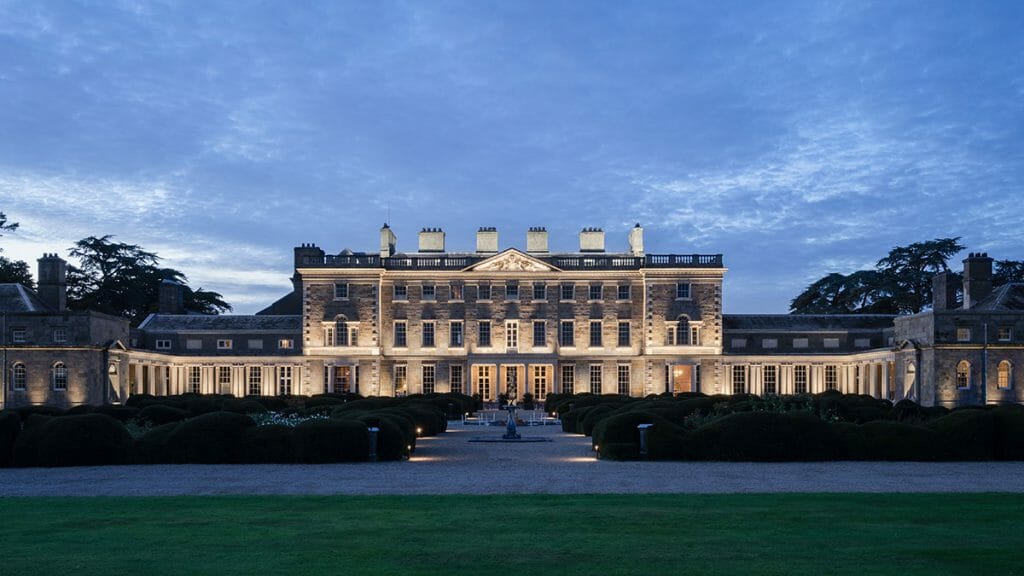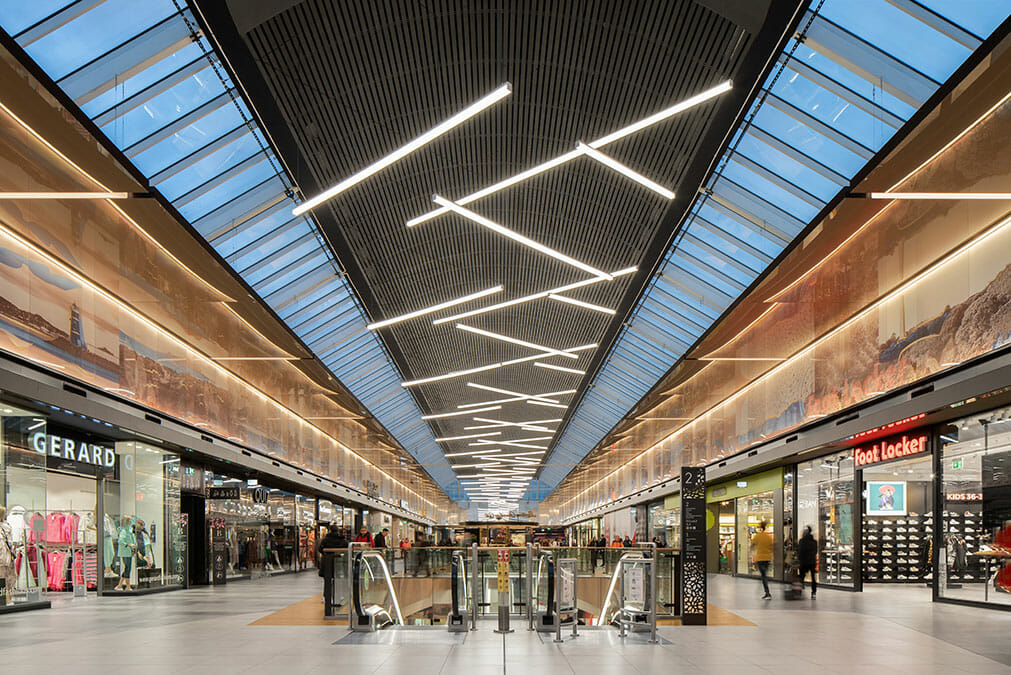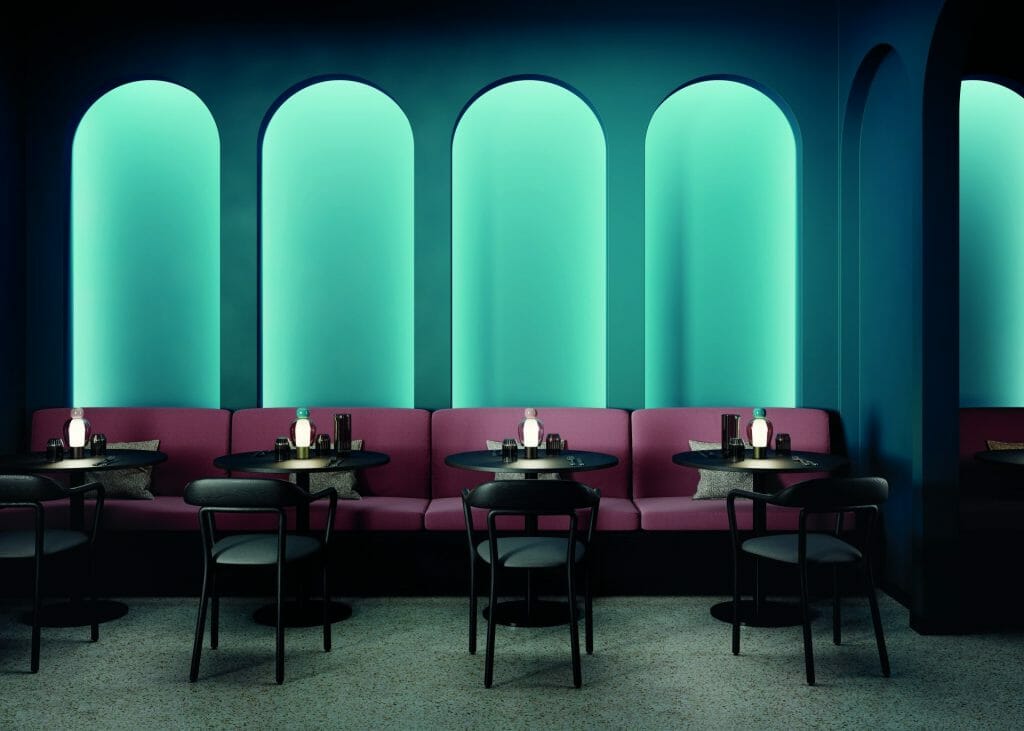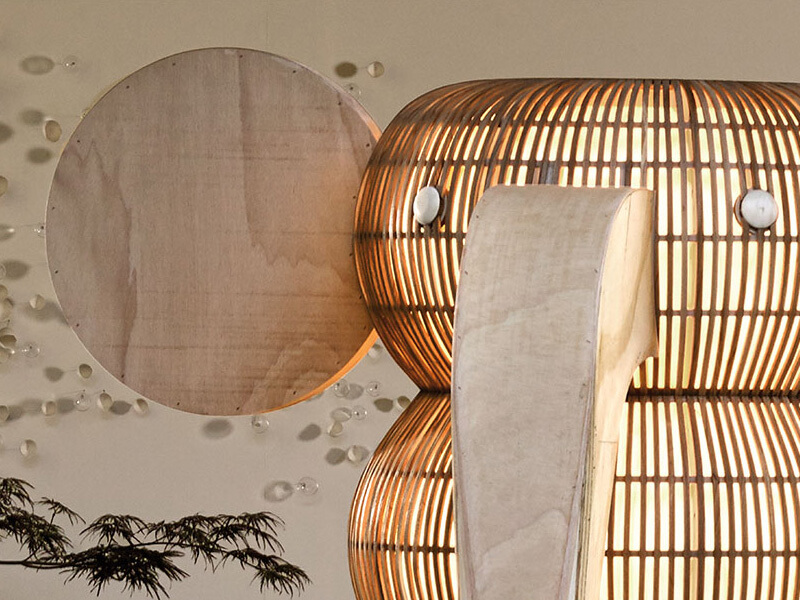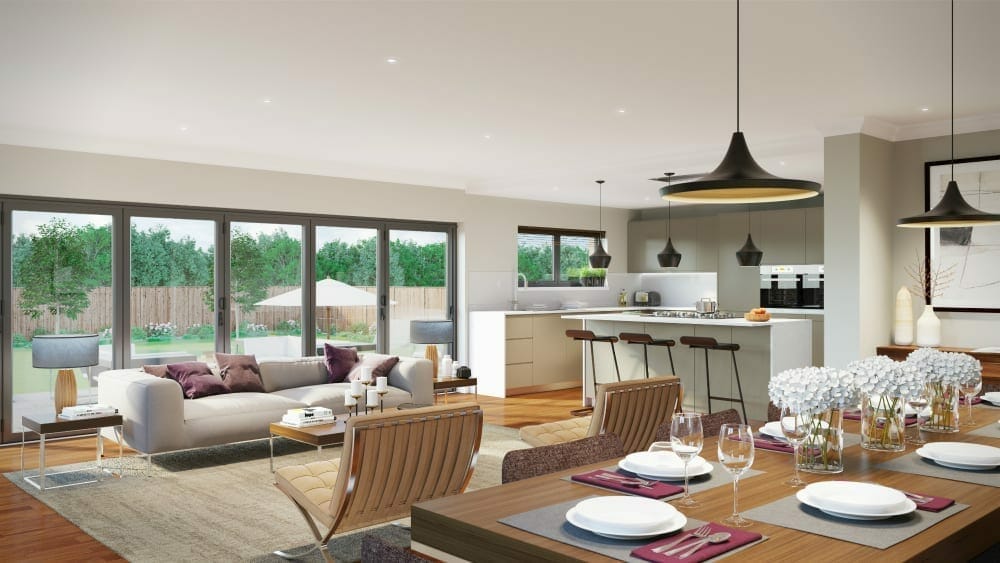- Contact us to discuss our residential design packages
- Design
- Inspire
- About
- About
- Blog
- Irish Times – Getting the lighting right in your home’s open-plan space

- August 10, 2021
- Monica Duggan
Original article here
THANK YOU TO DENISE O’CONNOR FOR THIS GREAT PIECE IN THE IRISH TIMES!
Busy at the best of times, the open-plan spaces in our homes have become even busier in the last 12 months. With so much going on in one space, planning a lighting scheme can be challenging. Here are four things to consider to be sure the lighting in this area of your home works in the way you want it to, whether you’re working, cooking, dining or just relaxing.
Task lighting
The kitchen area is one of the places in the home where task lighting is crucial. You should make sure your work surfaces are well lit and that the lights are positioned so you are not working in your own shadow. It’s not about the number of fittings you use but rather where you place them to get the light exactly where you need it.
A classic mistake is to put the lights in the ceiling in the space between the counter and an island unit. (This will light the floor and not the counter.) It’s best to position the lights over the counter. If you have overhead cabinets, invest in good under-cabinet lighting.
Downlights, like them or not, work well in this area of the home. If you’d prefer not to use them, there are other ways to achieve good task lighting. You could go for some pendant lights over your island unit and then good under-cabinet lighting over any other counter or cooking surfaces. If you don’t have wall cabinets, you can use wall lights to light your countertop.
Layers of light
Once you have your task lighting sorted, you need to think about adding different light sources. “With lighting, we often talk about building up layers to create an effective lighting scheme,” says Willie Duggan Jnr of Willie Duggan Lighting. Thinking about your lighting in layers will allow you to create different atmospheres in the space at different times of the day and depending on what you are doing. Having various light sources and separate circuits to operate the lights will give you more flexibility.
Decorative lighting, such as pendant lights, will add an attractive feature to your space. These fittings also help define different zones within an open-plan space, when used over a dining table or an island, for example.

The kitchen area is one of the places in the home where task lighting is crucial. While spotlights are suitable for spaces where you need good task lighting, such as in the kitchen, they are not ideal in areas where you want to relax. You will get much nicer effects with table and floor lamps or concealed lighting in joinery units, for example.
Quality fittings
Your choice of fitting will significantly affect the light quality in your room, so make sure you go for quality. There are a couple of things to look out for when choosing a light fitting to ensure you buy the best quality. The first is how cold or warm the light is. For residential interiors, warm light is best. “You should be looking for a bulb with a value of between 2700-3000 Kelvin,” recommends Duggan. If you are sourcing lights from different suppliers, make sure you ask about the colour temperature to ensure they are coordinated. Otherwise, you risk having lots of lights in different colour temperatures.
The next thing to look out for is the colour rendering of the bulb. This will determine how natural the colours on your walls and your finishes look when the lights are on. Duggan recommends going for a bulb with a value of between 90 and 100 for accurate colour rendering. “If you pick a poor colour rendering bulb with a value of 75, for example, you’ll find that vibrant colours will look flat,” he explains. You could spend a lot of time picking your interior finishes and colours, and then poor quality lighting will let it down.
Tackling dark spaces
If you struggle to get a lot of natural light into your open-plan space, a few innovations can help. The first is called warm dimming. These fittings start at 3,000 Kelvin and get much warmer as you dim them. So they work well in an open-plan space where you can have a brighter level when working in the kitchen and then dim it down in the evening when you are relaxing or watching TV.
The second innovation is called dynamic white light. These fittings change from very cool to warm, so they behave a little more like daylight.
Another tip for dark or north-facing spaces is to try to light as many surfaces as possible. Reflected light is what you see in a room; in other words, the light that shines on to the walls and ceilings. Filling the ceiling with downlights in a north-facing room will result in a dark ceiling and make the space feel oppressive. Instead, try to uplight your ceiling. You can do this with floor or wall lamps for existing spaces. Or if you are starting from scratch, you might like to consider some concealed lighting recessed into the ceiling. LED tape is widely available now and comes in rolls of different lengths. It’s straightforward to install and is ideal for use in recessed ceiling details. By reflecting light on to the ceiling, especially for lower ceilings, the room will feel brighter and more spacious.
Denise O’Connor is an architect and design consultant @optimisedesign
- Design,Tips
- Getting the lighting right, Interior Lighting Design, Irish Times, Lighting Design, Lighting Products, Monica Duggan, Open Plan Space, willie duggan

About Monica Duggan
Monica grew up with a screwdriver & bulb in her hands before she started to 'hassle' the boss! After gallivanting around the world & getting an education she worked in all areas of the business, and was a natural fit for developing Willie Duggan further. She does her best thinking struggling up a mountain, hiking a trail or beating herself up in the gym!
Browse by category
Browse by tag
- #IDSW2019
- 2019
- 2021
- 2022 Award Winners
- 48 volt track
- About Us
- Ambient Lighting
- Architect
- Art
- Arturo Alvarez
- Awards
- Bathrom
- Bathroom
- Bathroom Design
- Bathroom Lighting
- Baynetcap
- bedroom lighting
- Behind the Scenes
- Biophilia
- Biophilic Design
- Blanchardstown Shopping Centre
- Blog Post
- Blue
- Brands
- building materials
- bulbs
- Carton House
- church design
- Colour
- Comfort Lighting
- commercial
- commercial design
- Contract Interiors
- cost
- Cottage Design
- Creativity
- Deconstructing
- decorative lighting
- Denise O'Connor
- Design
- Design Team
- Details
- Dining Space Lighting
- Downlighting
- downlights
- E14
- electrician
- Electrics
- Emotion
- Emotional Lighting
- enviromentally friendly
- Estluz Laverd
- Exhibitions
- Experience
- experiential showroom
- Exterior Lighting
- external lighting
- eyelit65R
- Festoon Lighting
- Finalists
- Finances
- first fix
- five star hotel
- floor lamp
- Floor Light
- Floor Plan
- flooring
- functional lighting
- Garden
- Garden Lighting
- Getting the lighting right
- Glare
- GU10
- guide
- Haberdashery
- Hard Wood Flooring
- healthy lighting
- Heart of the home
- hidden lighting
- hints
- Home
- Home renovation
- house design
- Hypro
- Illuminated Furniture
- IMNDA
- importance of windows
- inchsawmills
- Interior Design
- Interior Lighting Design
- Interiors Trends
- International Dark Sky Week 2019
- internorm
- IP Rating
- Irish Times
- Ivela
- Jan Battles
- kitchen
- Kitchen Design
- Kitchen lighting
- Kitchen Squeeze
- Lampshades
- Landscape Lighting
- Layers of Light
- LED
- LEED
- Light
- light and health
- Light Art
- Light Brands
- Light Design
- Light Effects
- Light Fitting
- light masterplanning
- Light Pollution
- Light Technology
- lightbulbs
- Lighting
- Lighting Company
- lighting controls
- Lighting Design
- lighting designer
- Lighting Designers
- Lighting Plan
- Lighting Products
- lighting switches
- lighting tips
- LIT awards
- Living Space Lighting
- LND
- LZF
- Minimal Glare
- Monica Duggan
- mood lighting
- Motor Neurone Ireland
- munster joinery
- Nest
- new build
- New Year
- new york
- newbuild
- Newsletter
- night time lighting
- NYCxDESIGN
- Online Consultation
- Open Plan Space
- Our Team
- Outdoor
- Outdoor Lighting
- Parquet FLooring
- pendant light
- Pendants
- Piet Oudolf
- plastering
- plumbing
- Power of Switching
- Prolicht
- recessed lighting
- reducer
- reflections
- renovate
- Renovation
- Residential Lighting
- Residential lighting design
- retail
- Retro Fit
- riai
- salvaging
- scene setting
- Self build
- Self Build Newsletter
- selfbuild
- senator
- shadows
- sonos
- spacer
- Spotlights
- st bartholomews church
- Studio Italia
- sustainable
- sustainable building
- switching
- table lamp
- Table Light
- talalighting
- Task Lighting
- The Irish Times
- timber frame
- tips
- Trend
- tricks
- UGR
- Unified Glare Rating
- voliere
- willie duggan
- willieduggan
- Windows
- wiring





- Inspire
